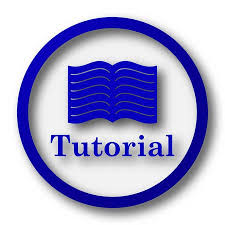Perancangan Lapis Pondasi Agregat Tanpa Penutup Aspal Pada Gradasi Batas Tengah Dengan Menggunakan Clay Stone
DOI:
https://doi.org/10.31961/gradasi.v2i2.609Keywords:
Lapis Pondasi, Clay Stone, Indeks Plastis (PI), California Bearing Ratio(CBR)Abstract
“Lapis Pondasi Agregat tanpa penutup aspal†is a strong layer structure because it receives a direct load of vehicles above the surface. In general, the making of access roads for mining sites does not use pavement with asphalt. One of the materials for mining pavement generally uses the mine's surface excavation using a clay stone as an addition to a mixture or filler for the aggregate layer structure. Clay stone is a sedimentary rock that is strong if it is in the soil and will become soft when submerged in water. “Lapis Pondasi Agregat tanpa penutup aspal†is dominated by fine particles which is a maximum diameter of 19 mm making it difficult to adjust the gradation composition. So to get the ideal gradation of “Lapis Pondasi Agregat tanpa penutup aspal†composition, it is necessary to do Research on “Lapis Pondasi Agregat tanpa penutup aspal†on Middle Border Gradations Using Clay Stone". The purpose of this study was to determine the value of the mixture composition between clay stone and broken stone, the value of PI content (plastic index) and CBR value
“Lapis Pondasi Agregat tanpa penutup aspal†must meet the requirements of material properties in accordance with the General Revised 3rd Edition of Bina Marga specifications, the gradation consists of material passed the filter ¾, maximum liquid limit value of 35%, minimum plasticity index value of 4% and maximum 15 %, clumps of clay and fragile granules of at least 0% and a maximum of 5%, coarse aggregate abrasion is a maximum of 40% and has a minimum CBR (California Bearing Ratio) value of 60%.
From the results of this study, it can be seen the mixture composition between clay stone and stone, PI value (plastic index) and CBR value from the gradation of the middle boundary of the “Lapis Pondasi Agregat tanpa penutup aspalâ€. The composition of the mixture of clay stone and aggregate rock broke on the middle boundary gradation, ie 1-2% broken stone by 20%, 1-1 broken stone by 33%, stone ash by 35%, and clay stone by 12%. Based on the results of the examination of the liquid limit and plastic limit, the Plastic Index (PI) value of the clay stone was 35.696% and for the combination of the mixture of broken stone with an additional 12% clay stone was 13.941%. Based on the results of laboratory density and CBR examinations, it was found that the design CBR value of broken stone aggregate was 73%, the clay stone was 1,150% and for the combination of clay stone and aggregate rock was broken by 64%.
Downloads
References
Badan Standarisasi Nasional. 2008. SNI 1970 : 2008. Metode Pengujian Berat Jenis dan Penyerapan Agregat Halus. Jakarta
Badan Standarisasi Nasional. 2008. SNI 1964 : 2008. Metode Pengujian Berat Jenis Tanah. Jakarta
Badan Standarisasi Nasional. 1990. SNI 1968 : 1990. Metode Pengujian Analisa Saringan. Jakarta
Badan Standarisasi Nasional. 2008. SNI 2417 : 2008. Metode Pengujian Abrasi. Jakarta
Badan Standarisasi Nasional. 2008. SNI 1966 : 2008. Metode Pengujian Batas Plastis. Jakarta
Badan Standarisasi Nasional. 2008. SNI 1967 : 2008. Metode Pengujian Batas Cair. Jakarta
Badan Standarisasi Nasional. 1996. SNI 4142 : 1996. Metode Pengujian Jumlah Bahan dalam Agregat yang Lolos Saringan No.200 mm. Jakarta
Badan Standarisasi Nasional. 2008. SNI 3423 : 2008. Metode Pengujian Analisis Ukuran Butiran Tanah. Jakarta
Badan Standarisasi Nasional. 1996. SNI 4141 : 1996. Metode Pengujian Gumpalan Lempung dan Butiran-butiran Mudah Pecah. Jakarta
Direktorat Jenderal Bina Marga. 2010. Spesifikasi Umum Divisi 5. Jakarta.
Firdaus, Abdurrahman. dkk. 2016. Praktek Uji Tanah 1 Laboratorium. Laporan. Geoteknik & Transportasi Politeknik Negeri Banjarmasin. Banjarmasin
Geos, Hasan. 2018. Clay Stone (Batu Lempung).(https://posalu.wordpress.com/2018/01/22/claystone-batu-lempung/, diakses tanggal 7 Mei 2018)
Hardiyatmo, Hary Christady. 1992. Mekanika Tanah 1. PT. Gramedia Pustaka Utama. Jakarta
Hardiyatmo, Hary Christady. 2010. Mekanika Tanah 1 Edisi Kelima. Yogyakarta.
Hardiyatmo, Hary Christady. 2011. Perancangan Perkerasan Jalan dan Penyelidikan Tanah. Yogyakarta.
Hutapea, Bigman. 2015. Geoteknik Bandara Bagian 2. (http://gloopic.net/article/penerbangan/geoteknik-bandara-bag-2, diakses tanggal 27 Juli 2018)
Laboratorium Geoteknik & Transportasi Politeknik Negeri Banjarmasin. 2015. Modul Praktikum Uji Tanah 2. Banjarmasin
M. Das, Braja. 1988. MEKANIKA TANAH Jilid 1.Noor Endah & Indra surya B. Mochtar. Surabaya.
Norhadi, Ahmad. dkk. 2015. Penentuan Nilai CBR dengan Variasi Gradasi Batas Bawah Terhadap Batas Tengah pada Lapis Pondasi Agregat Kelas A. Jurnal Poros Teknik vol 7 No. 2, Desember, 2015. (https://media.neliti.com/media/publications/126133-ID-penentuan-nilai-cbr-dengan-variasi-grada.pdf, diakses tanggal 7 Mei 2018)
Panduan. 2015. Penulisan Tugas Akhir Jurusan Teknik Sipil Revisi IV. Politeknik Negeri Banjarmasin. Banjarmasin
Spesifikasi Umum. 2010. (Revisi 3) Divisi 5 Perkerasan Berbutir dan Perkerasan Beton. Kementrian Pekerjaan Umum Republik Indonesia. Direktorat Jendral Bina Marga. Jakarta
Downloads
Published
Issue
Section
License
- Hak publikasi atas semua materi naskah jurnal yang diterbitkan/dipublikasikan dalam Jurnal Teknik Sipil ini dipegang oleh Dewan Redaksi dengan sepengetahuan penulis (hak cipta tetap dimiliki penulis).
- Ketentuan legal formal untuk akses artikel digital jurnal elektronik ini tunduk pada ketentuan lisensi Creative Commons Attribution-ShareAlike (CC BY-SA), yang berarti Jurnal Teknik Sipil berhak menyimpan, mengalih media/format-kan, mengelola dalam bentuk pangkalan data (database), merawat, dan mempublikasikan artikel tanpa meminta ijin dari Penulis selama tetap mencantumkan nama Penulis sebagai pemilik Hak Cipta.
- Naskah yang diterbitkan/dipublikasikan secara cetak dan elektronik bersifat open access untuk tujuan pendidikan, penelitian, dan perpustakaan. Selain tujuan tersebut, dewan redaksi tidak bertanggung jawab atas pelanggaran terhadap hukum hak cipta.








